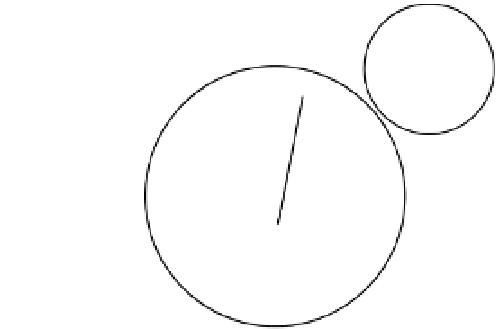Game Development Reference
In-Depth Information
Figure 6-13.
Velocity doesn't line up with line of action for oblique impacts.
When two objects collide obliquely, they will slide against each other for a brief period of
time. In Chapter 3, you learned that when objects slide against each other, a frictional force is
generated between the contacting surfaces, which resists the sliding motion. The friction force
also generates an applied torque on the two objects. The applied torque generates an angular
acceleration. In other words, when the objects slide against each other, they will begin to spin.
The spin acquired due to oblique impact is a very important phenomenon in sports. It is
the oblique impact of the golf club head and ball that generates the backspin that golfers use to
alter the trajectory of their shots. Soccer players like David Beckham are able to bend their
shots because friction between their shoe and the ball generates the required spin.
We will now develop the mathematical equations to predict collision-induced spin. The
objective is to find relations that compute the translational and rotational velocity components
after an oblique collision. Most of the development will be performed in two dimensions
because it is easier to visualize what is going on, but towards the end we will discuss how to
apply the techniques to three-dimensional oblique collisions.
Frictional Impulse
In Chapter 3, we learned that friction force,
F
F
, is related to the normal force acting on an
object,
F
N
, multiplied by the coefficient of friction,
m
. The friction force resists motion in the
direction perpendicular to the normal force.
F
F
=
mF
N
(6.31)
Earlier in this chapter, we saw that a collision causes a linear impulse of force that acts
along the line of action normal to the point of collision of the two objects. The linear impulse
of force causes a change in the velocities along the line of action. If the two objects experience
an oblique collision and there is friction between them, a frictional impulse, , will be gener-
ated that is equal to the product of the coefficient of friction and the linear impulse of force.
F
ˆ
F
ˆ
m
ˆ
N
=
(6.32)







